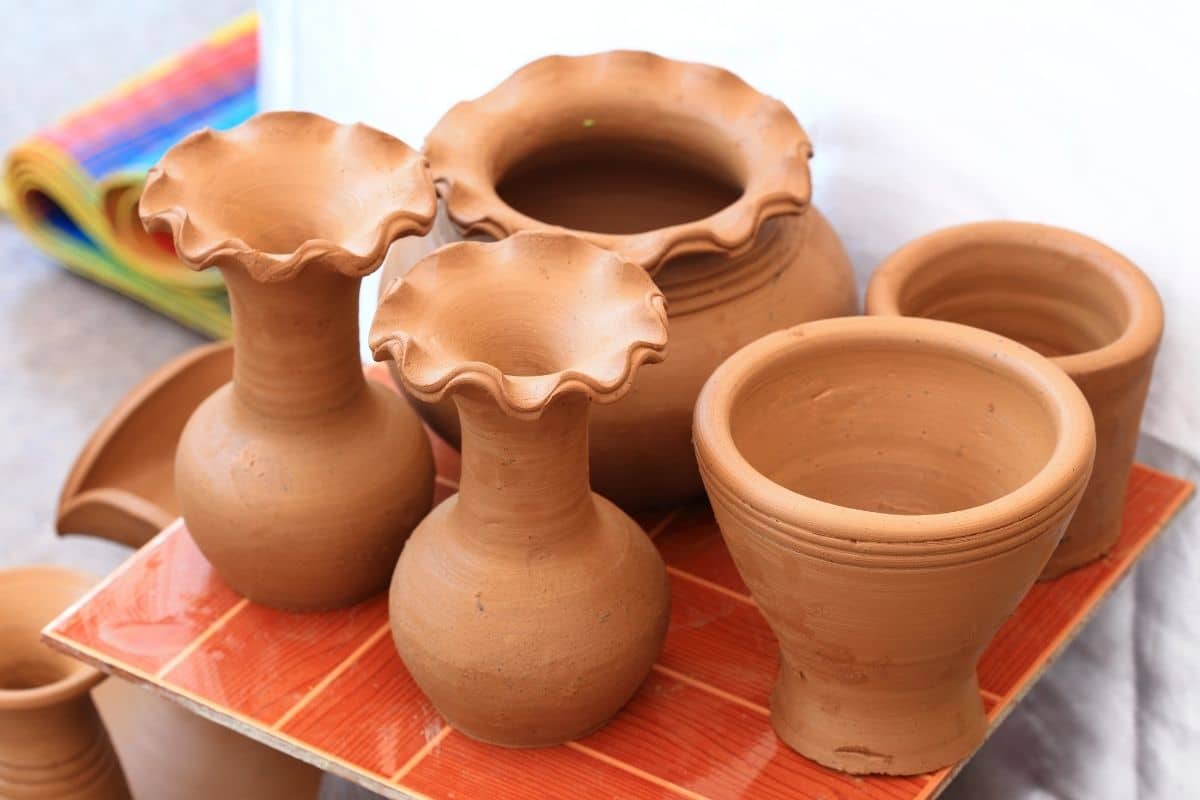Clay is a great material for crafting, but it can be tough to work with if it’s too hard. You can microwave clay to soften it, making it easier to mold and shape. It’s important to use the right kind of clay and follow the proper steps to ensure that your clay doesn’t get too hot and become ruined.
With a little careful planning, you can successfully soften your clay in the microwave.
- Place the clay in the microwave oven
- Heat on high for 30 seconds
- Remove and knead
- Repeat as necessary until the clay is soft
How to soften hard and old oven-bake polymer clay
How Do You Soften Hard Clay?
Clay is a naturally occurring material that can be found in many different environments. It is often used in construction and pottery because of its unique properties. Clay is composed of small particles of minerals, which gives it a high surface area to volume ratio.
This makes it ideal for absorbing water and other liquids. However, the same property that makes clay so useful can also make it difficult to work with. Hardened clay can be very difficult to break apart or shape.
There are a few different ways to soften hard clay. One method is to add water to the clay and allow it to soak for a period of time. The water will slowly penetrate the clay particles and break them apart, making the clay more pliable.
Another way to soften clay is to heat it up. This will cause the particles to expand and become less dense, making the clay easier to work with. Finally, you can also add organic matter such as leaves or manure, which will help break down the clay particles over time.
If you need to soften hard clay quickly, adding water or heating it up are your best bet. However, if you have some time and patience, adding organic matter will eventually do the trick as well.
Can You Microwave Air Dry Clay to Soften It?
microwaving air dry clay will not soften it. The clay needs to be baked in order to harden.
How Do You Soften Modeling Clay Quickly?
Assuming you are talking about polymer clay, there are a few ways to speed up the softening process. The first is to put it in the microwave for a few seconds- just make sure to keep an eye on it so it doesn’t get too hot and start melting. Another way is to warm it up with a hairdryer set on low heat.
You can also try rolling it out flat and then folding it over itself several times- this will help to break down the clay’s structure and make it more pliable. Finally, if all else fails, you can always knead in some petroleum jelly or vegetable oil until the clay is soft enough to work with.
Can You Put Clay Pottery in the Microwave?
Clay pottery is a type of ceramic that is made from natural clay. It is fired in a kiln at high temperatures, which makes it very durable. However, this also means that it can’t be used in the microwave.
The high heat of the microwave will cause the clay to expand and break the pottery. So if you’re looking to reheat your food in a hurry, stick with glass or plastic containers.

Credit: canyoumicrowavethis.com
Can Clay Mugs Go in the Microwave?
If you’re like most people, you probably use your microwave multiple times a day. Heating up food is quick and easy with this kitchen appliance. But can everything go in the microwave?
For example, can you put a clay mug in the microwave? Clay mugs are beautiful and unique, but they’re not necessarily microwavable. This is because clay is a natural conductor of heat.
That means it will absorb heat from the microwaves and become very hot. If you were to put a clay mug in the microwave, it could potentially crack or break. So, what’s the alternative?
If you want to use a clay mug in the microwave, make sure it’s specifically marked as microwavable. These mugs have been treated so that they won’t absorb microwaves and become hot. You can find these mugs at most kitchen stores or online retailers.
Now that you know whether or not clay mugs are microwavable, be careful with what else you put in your oven!
How Long Do You Put Clay in the Microwave?
When it comes to heating up clay in the microwave, there is no definitive answer. It really depends on the type of clay you are using, as well as the wattage of your microwave. For example, oven-bake clays should only be heated for a few seconds at a time, whereas modeling clays can be heated for longer periods of time.
As a general rule of thumb, start with shorter heating times and then increase as needed. If you find that your clay is not getting soft enough after a minute or so in the microwave, try increasing the heating time in increments of 15-30 seconds until you achieve the desired result.
How to Soften Clay?
Clay is a great material for crafting, but it can be tough to work with if it’s too hard. If your clay is too hard, there are a few things you can do to soften it up and make it more pliable. One way to soften clay is to add water to it.
The amount of water you’ll need will depend on how hard the clay is and how much you need to soften it. Start by adding a little bit of water and kneading the clay until it’s more pliable. If it’s still too hard, add a bit more water and continue kneading until the desired consistency is reached.
Another way to soften clay is to heat it up. This can be done by putting the clay in an oven set at a low temperature or by using a hair dryer on low heat. Heat will help make the clay softer and more pliable.
Start with just a few minutes of heating and then check the consistency of the clay. If it needs further softening, continue heating in short intervals until the desired consistency is reached. If you find that your clay is still too hard after trying these methods, there are other ways to soften hardened clay.
You can try microwaving the clay for short intervals or soaking it in warm water overnight. With some patience and trial and error, you’ll be able to get your clay soft enough to work with easily!
Conclusion
In short, yes you can microwave clay to soften it. But there are a few things to keep in mind when doing so. First, only heat the clay for a few seconds at a time.
Second, be sure to knead the clay after each heating interval to evenly distribute the heat. And lastly, don’t overdo it or you’ll risk damaging the clay’s structure.

Asma Sheikh is a food and recipe blogger who loves to cook and bake. Her blog, “Kitchen Crunch”, is all about sharing her recipes with the world. Asma has been cooking and baking since she was a little girl, and she loves to share her passion with others. She believes that anyone can cook, no matter their skill level, and she enjoys helping others to learn new techniques and recipes.

